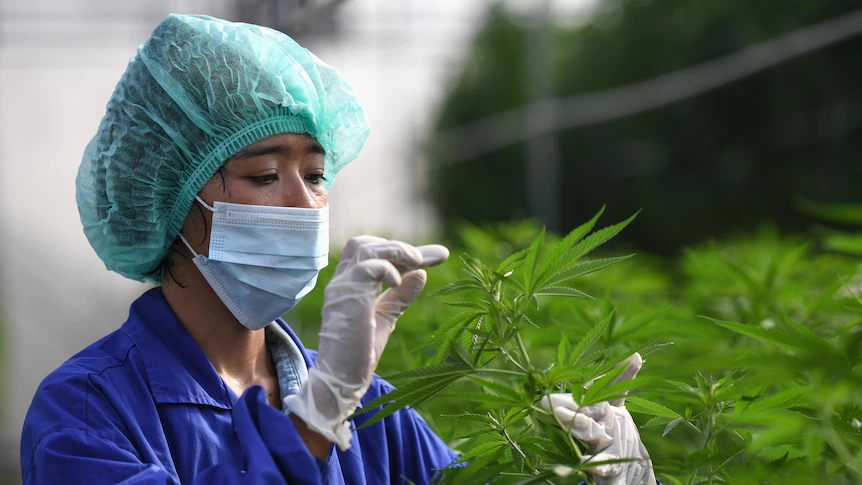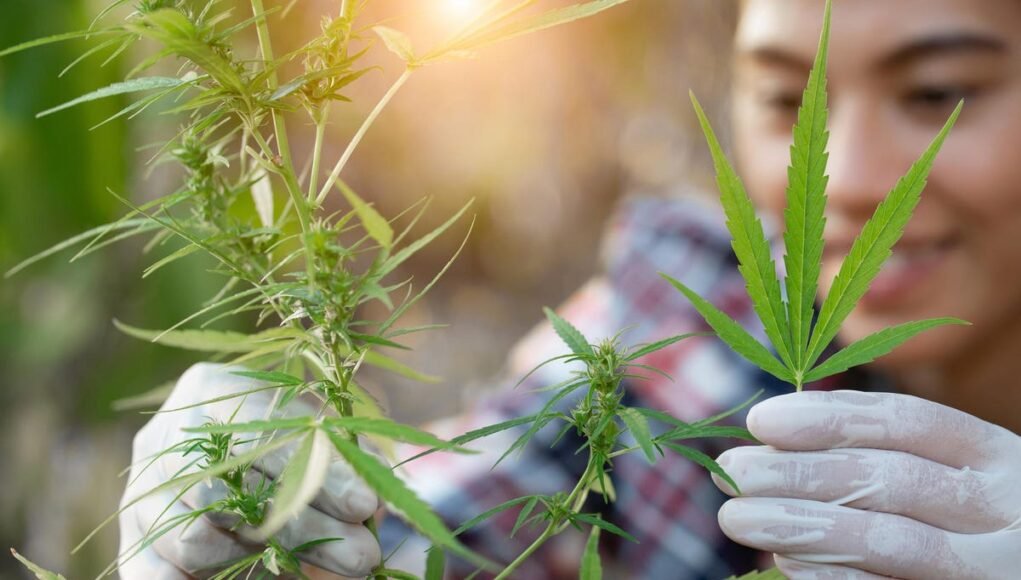
HONG KONG, Dec 23 (Reuters Breaking-views ) – Asia is slowly accepting cannabis. Thailand legalised cannabis cultivation in 2022, while South Korea, Japan, and Malaysia are preparing to use it pharmaceutically. It is estimated that the weed market will grow to $100 billion by 2026, according to research firm Prohibition Partners. Businesses in the region are preparing for Asian consumers’ demand.
Though the Thai government’s decision to remove cannabis from its narcotics control list is nominally to support its medicinal use, it will likely ease recreational consumption as well. And this in turn could lead to an increase in international tourist arrivals–Renewable energy firm Gunkul Engineering committed 2 billion baht ($57.6 million) to building a new cannabis plantation and extraction facilities (local Thai media). Cafe-goers can already enjoy cannabis-infused green teas made by Srinanaporn Marketing or Ichitan Group as well as cannabidiol-spiked chicken leg snacks which are now on sale at local supermarkets.
Even in Japan, a country with strict cannabis-possession laws, cannabidiol is allowed in certain amounts. E-commerce company Rakuten, tobacco retailer Pan Pacific International and supermarket Don Quijote all sell CBD oils and gummies. South Korea was the first country in East Asia to legalize pharmaceutical cannabis and China is considering similar steps. If America’s experiences are any guide, regulated pharmaceutical use will eventually trickle into the recreational market, boosting aggregate demand.
Due to its experience with opium, China is a bit skeptical of marijuana. However, the country grows hemp naturally and produces a significant part of the world’s hemp fiber. The extraction process for full spectrum hemp oil, which contains CBD, is legal as long as it’s exported under close supervision. And because of conservative attitudes in Beijing, China will probably see cannabis use happen mostly in neighboring countries.
The Asian weed market is expected to grow by at least 10 times to roughly $120 million by 2026, according to Conor O’ Brien, former senior analyst at Prohibition Partners. Even though cannabis in Asia burns slowly, it may eventually result in fire, because where there is smoke, there may eventually be fire. That’s only a fraction of the $100 billion industry that the devil’s lettuce has become.
HONG KONG, Dec 23 (Reuters Breakingviews) – Asia is beginning to warm up to cannabis use. Thailand will legalise marijuana cultivation in 2022, while South Korea, Japan and Malaysia are planning to use cannabis in pharmaceuticals. The weed market is expected to reach $100 billion by 2026, according to Prohibition Partners, and regional businesses are preparing for Asian consumer demand.
The Thai government’s decision to remove cannabis from narcotics control lists is nominally for medicinal purposes, but this will unavoidably lead to recreational use as well. Renewable energy company Gunkul Engineering (GUNKUL.BK) committed 2 billion baht ($57.6 million) to building a new cannabis plantation and extraction facilities as well, local Thai media reported. The leaf of the cannabis plant can already be found in popular chicken leg snacks and in some retailers’ cannabidiol-infused green teas alongside other healthy drinks like those offered by Bangkok-listed Srinanaporn Marketing (SNNP.BK).
Even though Japan has strict possession laws around cannabis, they allow an active ingredient of cannabis that doesn’t get users high, better known as CBD. E-commerce company Rakuten (4755.T) and Don Quijote supermarkets in Japan now offer a wide range of CBD oils and gummies. South Korea was the first country in East Asia to legalize medical cannabis, and Japan, Malaysia and Taiwan are all considering following suit. If American experience with regulated medical cannabis is any indication, pharmaceutical use will inevitably trickle into the recreational market, boosting aggregate demand.
China is a question mark. Scarred by its experience with opium, the country associates it with imperialism. On the other hand, marijuana plants grow naturally in Yunnan province, and China is largely responsible for industrial hemp production worldwide. Given conservative attitudes in Beijing, recreational and medical cannabis use will likely happen in neighbouring countries.
Conor O’ Brien, former lead analyst for Prohibition Partners, predicts that the Asian weed market will grow 10 times by 2026 to roughly $120 million, making weed enthusiasts optimistic. Although that’s only a fraction of the $100 billion industry that devil’s lettuce is becoming, it’s a start. Cannabis in Asia burns slowly, but where there is smoke, fire will follow.

































